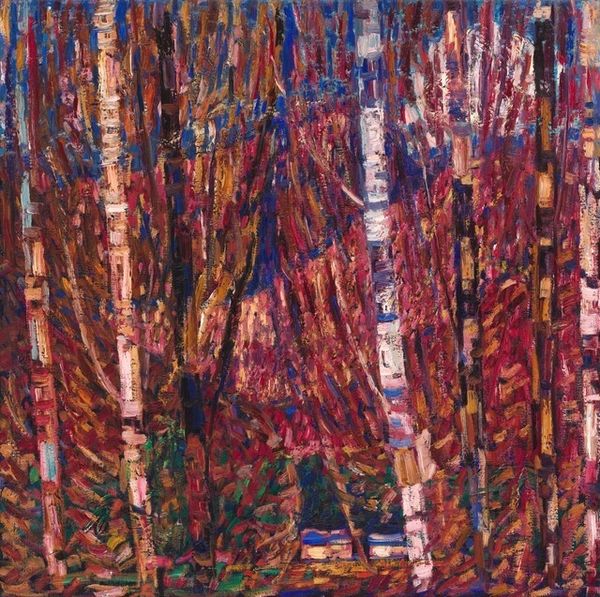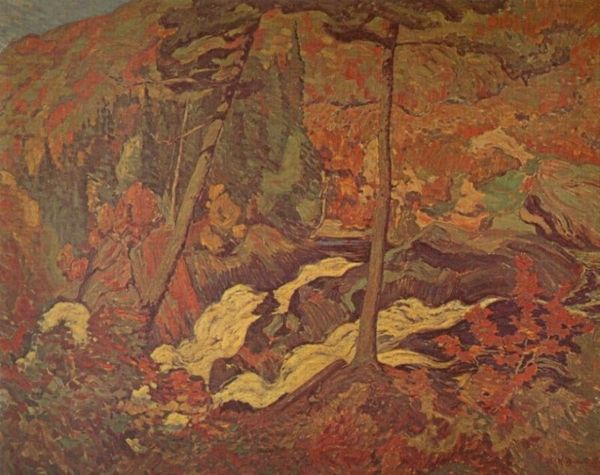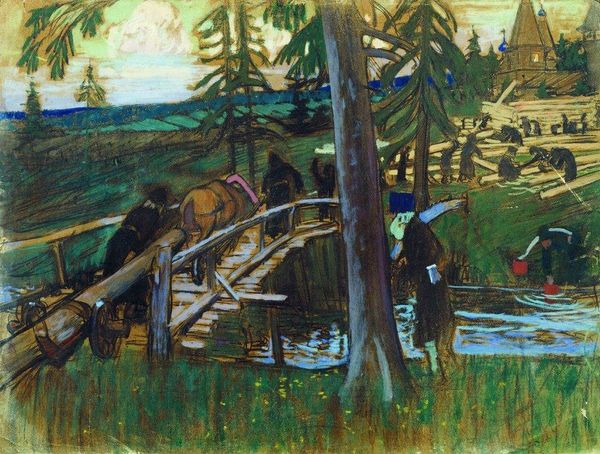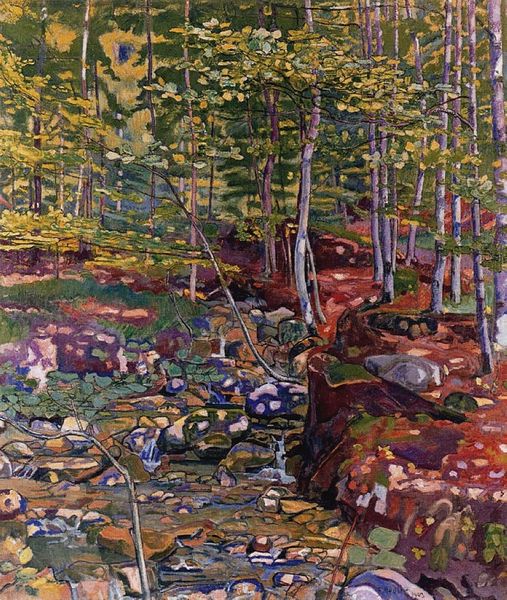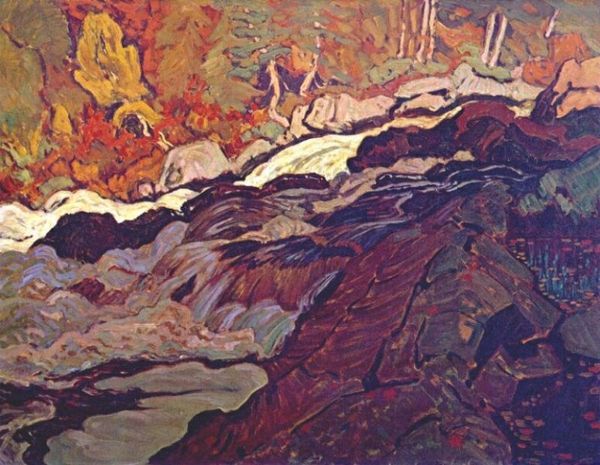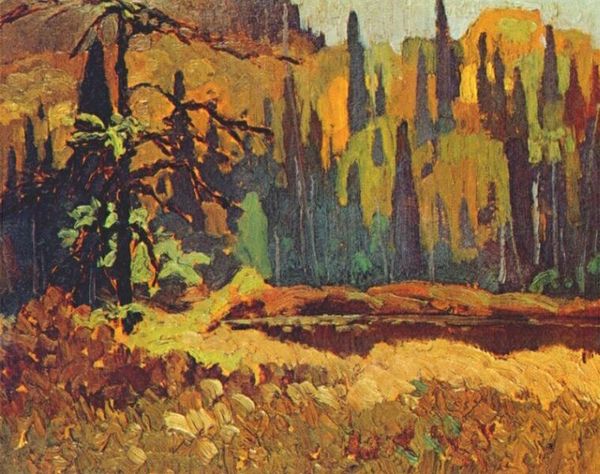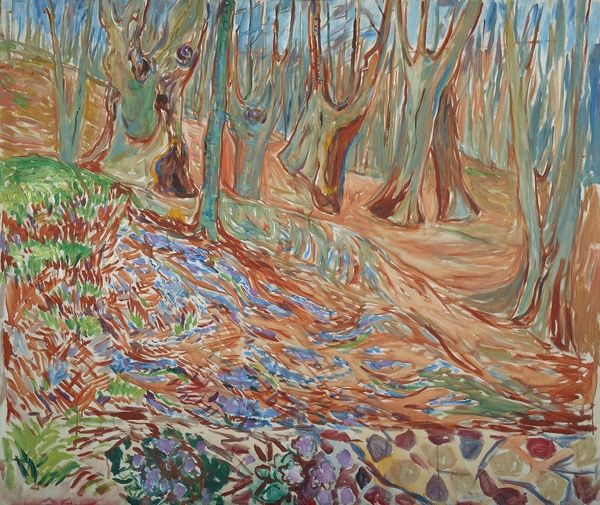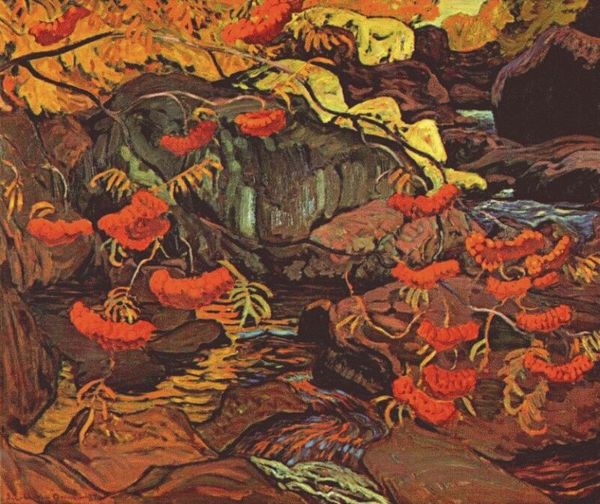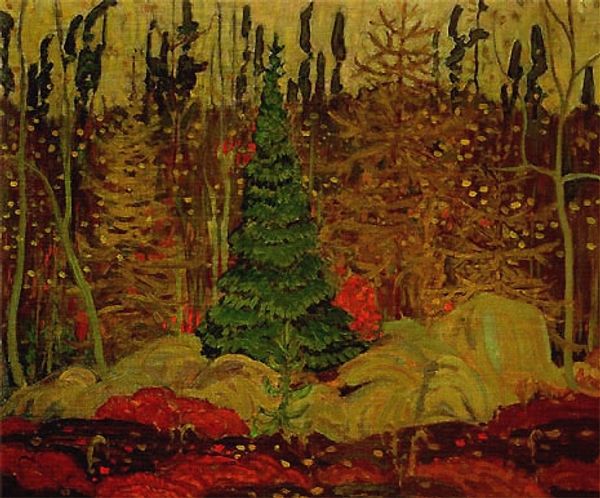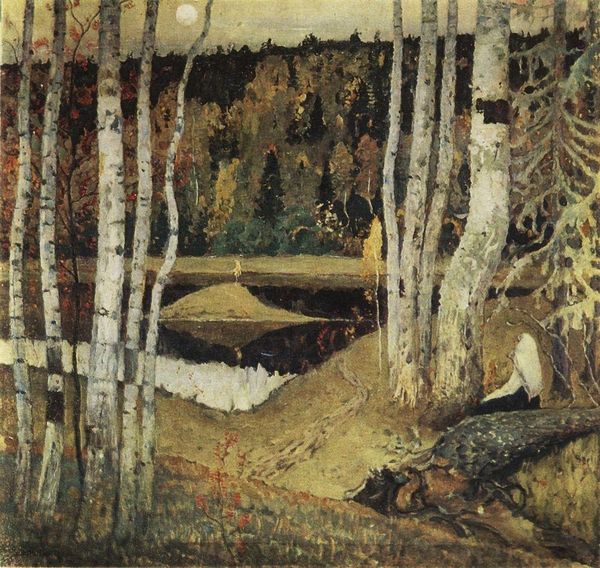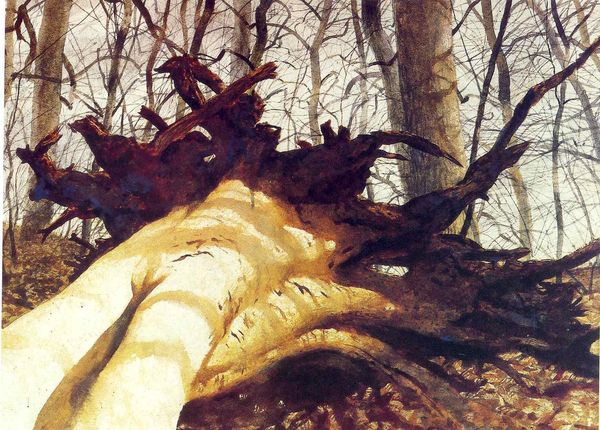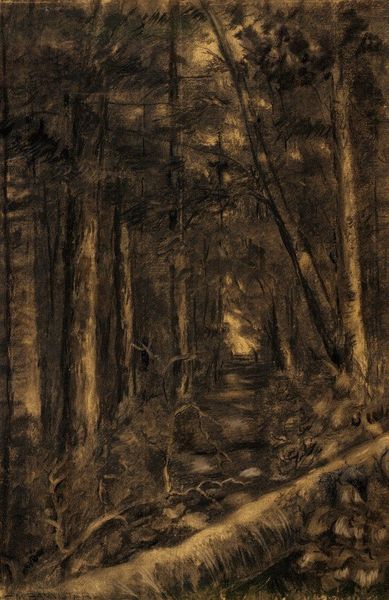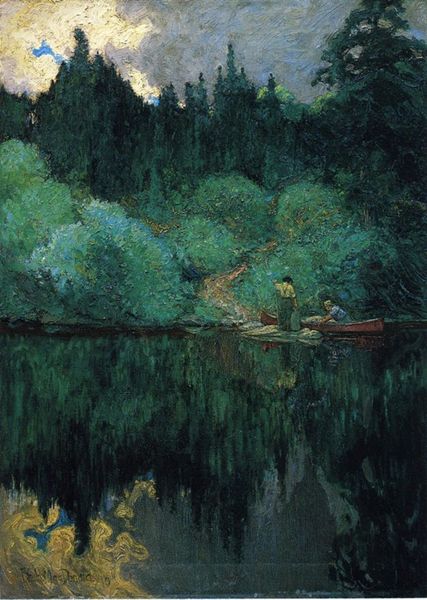
Copyright: Public domain
Editor: J.E.H. MacDonald's "The Beaver Dam," painted in 1919 using oil paints en plein air, has such an enigmatic feel, almost like a forgotten corner of the world. There’s a sense of stillness despite the visible brushstrokes. What sort of symbolism do you see present in the scene? Curator: Notice how the beaver dam, itself a symbol of industriousness and transformation, dominates the foreground. The red canoe nestled within it – does it suggest a co-existence, a harmonious relationship between humanity and nature or something else? The colour Red also may speak of strength. The beaver's creation becomes the resting place for human creation, maybe inviting us to think about our own intervention within the wilderness, eh? Editor: So the dam becomes more than just a structure, but a meeting point? What about the forest itself; does its symbolism add to this reading? Curator: Absolutely! Forests often symbolize the unconscious, the unknown. Notice the density, the way the trees seem to guard the scene, casting a psychological shade onto the work? This sense of an enclosed space hints that the journey of discovery and perhaps the symbolic representation of an inward psychological investigation or, quite simply, of one who knows intimately these spaces in the wild. How do these elements coalesce for you? Editor: That is amazing to consider, weaving industry and the individual together. Now the thick texture speaks to MacDonald's understanding of a particular space, almost making it tactile and relatable. Curator: Precisely, by examining MacDonald's symbolic imagery and understanding of iconography and personal narrative, and his relation with that personal experience within these locations in nature, perhaps it opens the pathway towards one's self. Thank you, the beaver works so that we all could enjoy the canoe safely ashore.
Comments
No comments
Be the first to comment and join the conversation on the ultimate creative platform.
